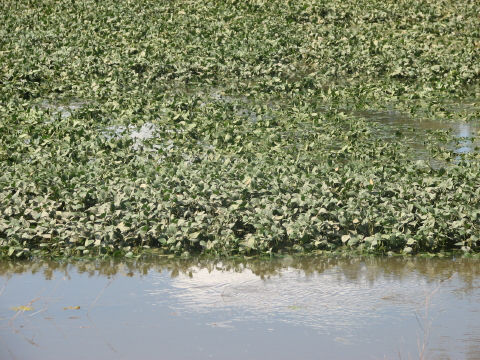5 MIN READ
Management of Flooded Fields
April 10, 2023
- Flooding in a field prior to planting may lead to "post flood syndrome," similar to the fallow syndrome in that the arbuscular mycorrhizae (AM) fungi are severely reduced.
- Utilizing an inoculant at planting may help increase the beneficial rhizobia populations in soybean fields.
- Using an inoculant for corn may improve the availability of phosphorus.
Flooding events from rivers or snow melt may result in many challenges that need to be addressed to prepare fields for planting and to ensure soil micro-organisms and soil nutrient levels are sufficient to maximize yield potential.

Flooding Impact on Plant-Available Nutrients
Soil lost due to erosion can remove valuable plant-available nutrients and organic matter. On the other hand, newly deposited sediments may increase the level of some nutrients in the soil, such as nitrogen, phosphorus, silicon, and potassium as well as bring in new weed seeds. Nutrients that are water soluble such as nitrate-nitrogen and potassium may be leached from the root zone and become unavailable to the crop; additionally, there is the possibility of leaching to groundwater sources.
The nitrogen in water-saturated soils can be converted through denitrification to the gaseous forms, principally nitrous oxide (N2O) and nitrogen (N2) and be lost to the atmosphere. Phosphorus availability can be reduced as flooding reduces the soil microorganism that convert phosphorus to be available for the plant.
Management Recommendations After Flooding
- To avoid compaction, let soils drain and dry out sufficiently before removing any large debris from fields or working the soil.
- Most of the chemical changes in the soil will be the result of temporary changes in oxidation and reduction conditions. However, some physical (aggregate stability, soil structure), chemical (pH), biological changes (microbial community) can be significant, especially if there is no growing crop on the field after the flood has subsided.
- While a flood can deposit soil on the field bringing nutrients it can also cause losses; therefore, a soil test is recommended to assess if there are nutrient deficiencies.
- If soybean is to be planted an inoculant should be used to ensure nodulation and subsequent nitrogen fixation. Flooding results in mortality of the Rhizobia that infect the root that results in nodulation, so even if the field was recently planted to soybean, if the field was flooded an inoculant should be used.
- While sufficient phosphorus may be in the root profile, flooding can also reduce the population of microbes (referred to as phosphorus solubilizing microorganisms (PSM)) that solubilize/mineralize insoluble soil phosphate to release soluble P and making it available to plants. Growers should consider inoculating seed with PSMs.
- If row crops will not be planted after flooding, a cover crop can be planted to help protect the soil from further erosion and to promote the growth of microorganisms that are essential for nutrient cycling.
- Fields should be scouted throughout the crop season to see if new weed species are present. Herbicide programs may have to be modified to address new weed types.
Addressing the Accumulated Silt or Sand
- If the amount is 2 - 4 inches (5 – 10 cm) it can be incorporated using normal tillage equipment. Minimizing tillage helps promote even weed seed germination thereby making weed management easier. Larger amounts of debris or sediments may have to spread out the material prior to field work.
- Material 6 inches (15 cm) deep can be incorporated with a moldboard plow at twice the depth of the material deposited.
- If it is between 8-24 inches (20 – 60 cm) deep the material should be spread to other areas of the field. If the material is all sand, it would be wise to spread to parts of the field with less sand and if used to fill washouts, it should be covered with a layer of topsoil.
- If the depth is greater than 24 inches (60 cm) deep, it should be physically removed from the field.
Sources
Al-Kaisi, M. 2011. Management considerations for post flooding soils. Iowa State University. https://crops.extension.iastate.edu/cropnews/2011/11/management-considerations-post-flooding-soils
Kaur, G., et.al. 2019. Impacts and management strategies for crop production in waterlogged or flooded soils: A review. Agronomy Journal. https://acsess.onlinelibrary.wiley.com/doi/full/10.1002/agj2.20093
1117_63142